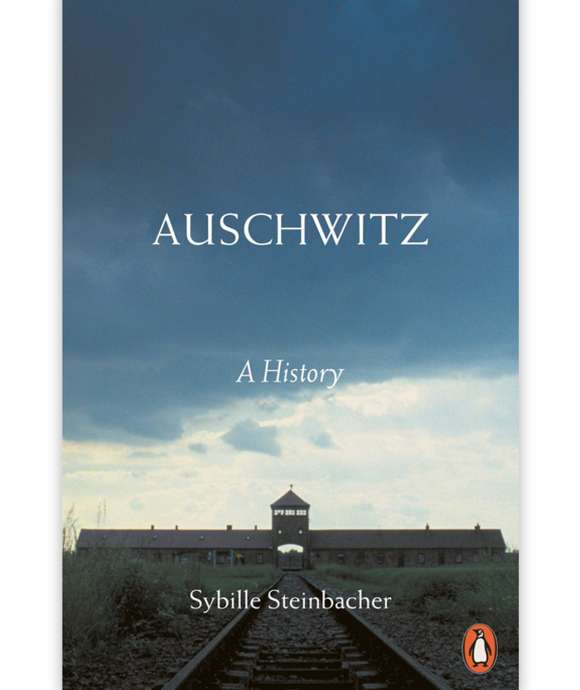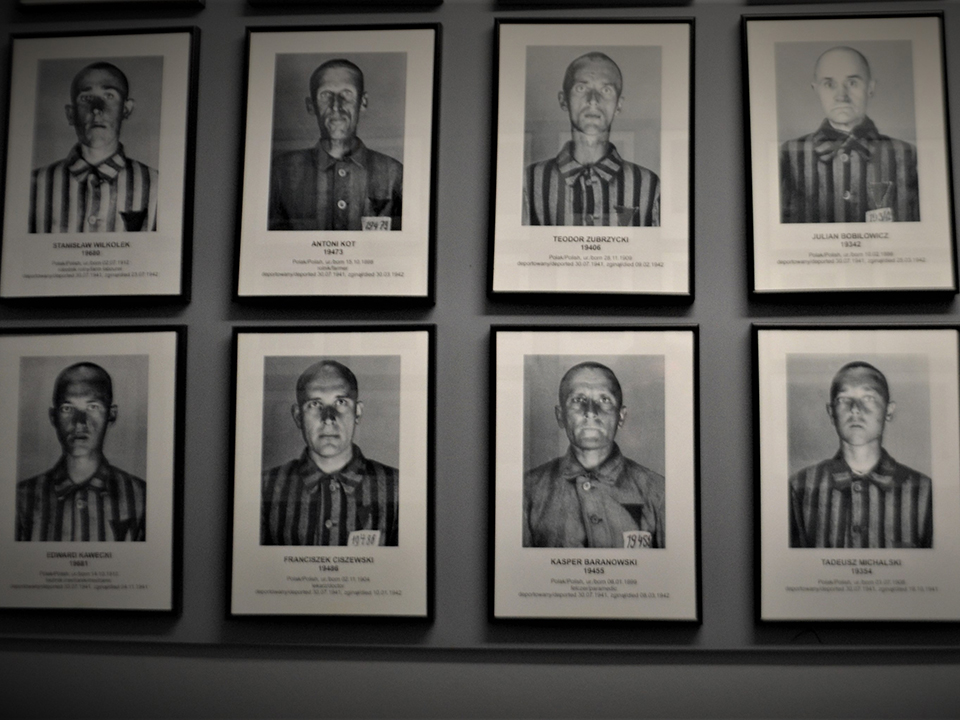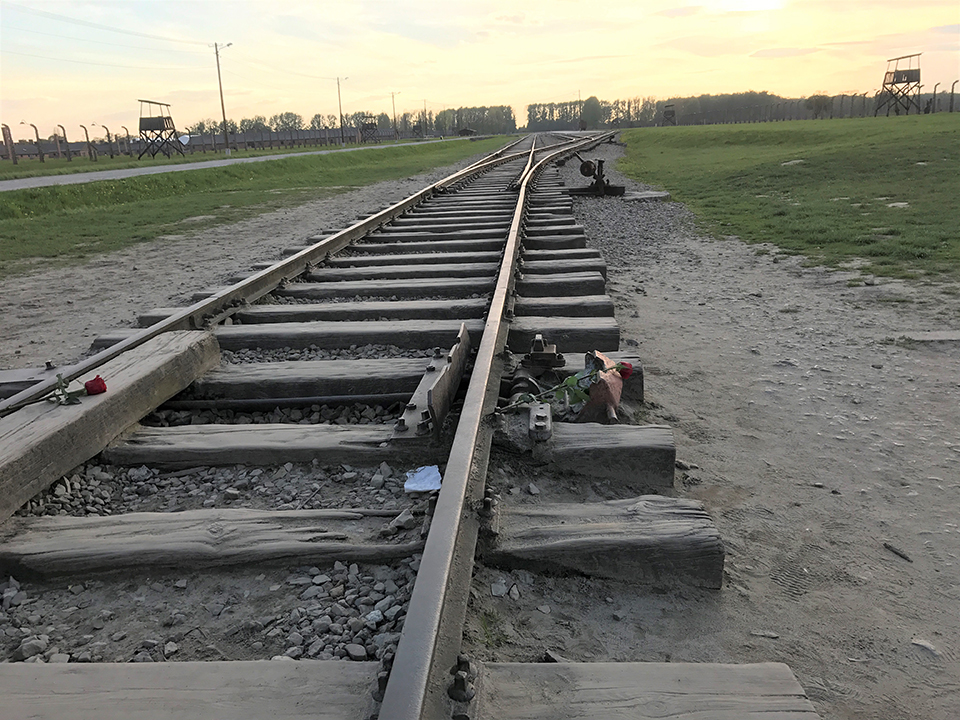As the world commemorates the anniversary of VE-Day, Victory in Europe over the forces of Nazi Germany in 1945, we are aware that the WWII generation that fought the battles and witnessed the events is passing from the scene. Sooner than we care to imagine, there will be no one left to provide personal testimony to the most pivotal event in modern history. Because of the war’s centrality to the founding of our modern world, however, we will still need to examine and think deeply about the answers we provide to the questions: what did it all mean? What was ultimately at stake in World War II?
For myself, there are two major legacies of the war that I have learned, and taught others, over the years. First is a political legacy: victory over Adolf Hitler’s Nazi Germany was essential for the survival of democracy and free institutions in the modern world. The Third Reich crushed ideals of individual freedom and equality wherever it triumphed, and at its peak Hitler’s empire stretched from Norway in the north to North Africa in the Mediterranean south, from France’s Atlantic shores in the west to the banks of the Volga River in the east. Wherever Nazism spread, oppression and slavery were founded.
The second legacy, however, is deeper, more philosophic, and grounded in humanism and the human spirit. The Nazi empire was erected in the name of a racist utopian vision where the strong eliminated any notions of compassion or shared humanity with those deemed weak and inferior. Hatred justified mass murder of people, ranging from the elderly to women and children, just for being who they were. What set the Nazi regime apart was its unrelenting, extreme totality: all were condemned to death, without exception, no one spared. The Death’s Head with empty eye sockets, worn against the black SS hats and uniforms, was the ultimate symbol of Nazi ideology. There was no light inside, no spark of conscience, nothing human, no spirit: only void and death.
This second legacy was personally imprinted on me when I visited Auschwitz-Birkenau on a museum tour in 2017. What is important to remember, not just on VE-Day but whenever we think of this history, is what was stopped.
Located near the town of Oświęcim in Poland, Auschwitz-Birkenau combined forced labor with extermination operations in 1942-1944. Auschwitz was a prisoner and labor camp, while Birkenau was a death camp. All told 1.3 million people were deported there by the Nazis. These included 1.1 million Jews, over 140,000 Poles, 33,000 Roma, 15,000 Soviet Prisoners of War and 25,000 prisoners from other ethnic groups. All told 1.1 million were murdered; 90 percent of the murdered were Jews asphyxiated in gas chambers. The camp was liberated by the Soviet Red Army on January 27, 1945, a few months before the final end of the Third Reich. Auschwitz-Birkenau is today a UNESCO World Heritage site.
Upon entry into Auschwitz, after walking under the infamous sign that greeted victims with the message Arbeit Mach Frei (Work Makes You Free), what struck me first was the appalling cruelty of the faked appearance of civilized behavior within. An orchestra played as new inmates walked the path, ostensibly to calm nerves and give hope in a place where inhumanity reigned.
Music can feed the soul, but not the stomach. The Nazis made sure that the latter was never satisfied. Starvation and hunger was inflicted on the victims, as people wasted into malnourished skeletons covered in tight skin.
It can never be forgotten that despite Nazi deceptions via music or flower beds, Auschwitz-Birkenau was a prison. Barbed wire enclosures were a constant reminder that those within were not free, no matter what the entry sign proclaimed.
The presence of death is ubiquitous. Even though Auschwitz was technically a labor camp, there were many ways to murder people outside the gas chambers of Birkenau. Victims were lined up against an execution wall in a courtyard and shot.
A gallows was built for hangings. When I visited here I could see in my mind’s eye other images of hangings conducted by the Nazis I had seen conducted elsewhere, particularly one of a young girl and another of a mass hanging of young men. I could remember their faces in the photos. I could not walk under the gallows, because I was looking at the spots on the ground where the victims’ feet must have dangled over, and stretched to touch in their last moments.
Auschwitz actually has a smaller crematorium on its grounds, not to be confused with the four large crematoria that were built for the Birkenau camp and that operated as part of an industrial mass-murder operation. Inside the door to the right side of the building, victims were gassed by Zyklon B dropped into the room from holes in the ceiling. On the left side of the building where the chimney is located are three ovens to burn the bodies. The bodies were loaded onto wheeled metal carts on rails which ran to the mouths of the ovens.
A railway line (and a highway today) bisects Auschwitz-Birkenau (there is a third camp in the system known as Birkenau II, but I did not visit that site). After crossing, we went first into the guard tower at Birkenau, which overlooks sprawling grounds of barracks. Needless to say, conditions were notoriously inhuman. But through the mouth of the building under the guard tower, trains came into Birkenau, and people were immediately selected for death when they were unloaded. Guards stood in the room, looking through this window at those tracks below, and watched.
What is unforgettable, and makes the horror of the Nazi regime all too real to me, is when individual victims make their way into your consciousness. Sometimes you don’t know their names. You only know something about their tastes, their likes. When I look at these brushes, I think about their owners. Look carefully and you can see hairbrushes, powder brushes, some with stiffer bristles that perhaps were used on their shoes. Who were these people? Were some of these gifts from loved ones? When they purchased these brushes, could they ever think that their brushes would be left behind in a place like this?
In another exhibit, the names of victims are painted on their suitcases. Their lives ended in this place where over a million souls perished, but in viewing their name on a piece of luggage, I start to try to picture their faces. Who might have owned such a suitcase? Georg Adler . . . Heinz Wittkowski . . . Martha Zaudÿ . . . Irene Karpeles . . . Franz Wolf . . . All murdered, but still with us.
-

Georg Adler's suitcase at Auschwitz-Birkenau. Courtesy Keith Huxen, PhD.
-

Heinz Wittkowski's suitcase at Auschwitz-Birkenau. Courtesy Keith Huxen, PhD.
-

Martha Zaudy's suitcase at Auschwitz-Birkenau. Courtesy of Keith Huxen, PhD.
-

Irene Karpeles's suitcase at Auschwitz-Birkenau. Courtesy Keith Huxen, PhD.
-

Franz Wolf's suitcase at Auschwitz-Birkenau. Courtesy Keith Huxen, PhD.
In all this unrelenting darkness, however, there were still rays of light that occasionally can be glimpsed. The creative impulse in people not only is hard to suppress, but in Auschwitz-Birkenau in the midst of murder and World War II, I find it nothing short of astonishing to view artwork produced by the victims there. The drawings done by prisoners in their own surroundings are protests against their fate and testimony to the crimes being committed against them. The drawings are there, left for us, so that we will know what happened to them, in this place.
-

Prisoner art on display at Auschwitz. Courtesy Keith Huxen, PhD.
-

Closer image of prisoner artwork on display at Auschwitz. Courtesy Keith Huxen, PhD.
But I think nothing quite is jarring as a portrait photograph of a person’s face. Rows upon rows upon rows of faces, all different but I think with a common sense of fear in their eyes, adorn the walls in one exhibit. What were they thinking when the shutter was snapped? It is impossible to imagine 1.1 million of these portraits all hung together on exhibit walls.
But if there is one thing I have learned and believe in this life, there is nothing more evil than the corruption and murder of pure innocence.
Anyone who has experienced being a parent has seen something larger than themselves in the life and being of their child. Here is a photo of an exhibit that not only has the portraits of murdered children, but also some of their clothing, even baby clothes. All told 232,000 children were murdered in Auschwitz-Birkenau, amongst them 216,000 Jewish children, 11,000 Roma, 3,000 Poles, and 1,000 Slavs of other nationalities. When the Red Army liberated the camp on January 27, 1945, they found only 450 children (aged less than 15 years) alive. When I look at their faces, I cannot imagine anyone wanting these pure young beings, these innocent faces, exterminated—just for existing. But these children perished here, because some people did.
On the door of one of the barracks in Birkenau I saw the startling contrast of a red rose with its long green stem, held in a red and white chain, against the rough wooden doors. When the Allies liberated towns in Europe, people would greet their armies joyously with wine, food, and flowers. These were symbols of restored Life with a capital “L,” that the good things we take for granted, like a meal at the table with loved ones, and even the extraordinary things that permanently imprint, like the beauty of children, women and men were restored. In a place like Auschwitz-Birkenau, however, I cannot imagine joy ever happening here.
The reason I have been thinking about Auschwitz-Birkenau on the anniversary of VE-Day is because to me, in a greater humanistic and moral sense, this place was the hellish fate, the destiny of so many more which the Allied armies ended before Hitler could expand it even further. Had Hitler triumphed, he would have physically murdered millions more. The inconceivable future to grasp is that the Death’s Head and the death-worshiping culture it symbolized would have become universal. The spiritual life of humanity would have been snuffed out.
That is why the Third Reich had to be destroyed. Ending Hitler’s Nazi Germany cost the lives of over approximately 275,000 Americans in the European theater and millions more worldwide, but the world was not eclipsed into a universal darkness. In this last photograph, the roses lie on the rails that lead past the guard towers to the crematoria of Birkenau against a setting sun. Far too many people, with real names, faces, hopes, aspirations, and loved ones perished in World War II so that we today might have the chance to live in the light of a better future. Let us never forget what happened here, and therefore prevent it from ever happening again. This glimpse backward into what might have been is necessary to truly appreciate the real meaning of Victory in Europe in 1945.

Auschwitz: A History
In Sybille Steinbacher's powerful new book, we are led through Auschwitz growing and mutating into an entire dreadful city, how both those who managed it and those who were killed by it came to be in Poland in the 1940s, and how it was allowed to happen, is something everyone needs to understand.
This article is part of an ongoing series commemorating the 75th anniversary of the end of World War II made possible by Bank of America.
Keith Huxen
Keith is the former Senior Director of Research and History in the Institute for the Study of War and Democracy at The National WWII Museum.
Cite this article:
MLA Citation:
APA Citation:
Chicago Style Citation:







![Max Fuchs, New York City cantor, sings as Rabbi Sydney [sic] Lefkowitz, Richmond, VA, conducts the first Jewish services from Germany.](/sites/default/files/styles/max_650x650/public/2025-10/image1.jpg)



